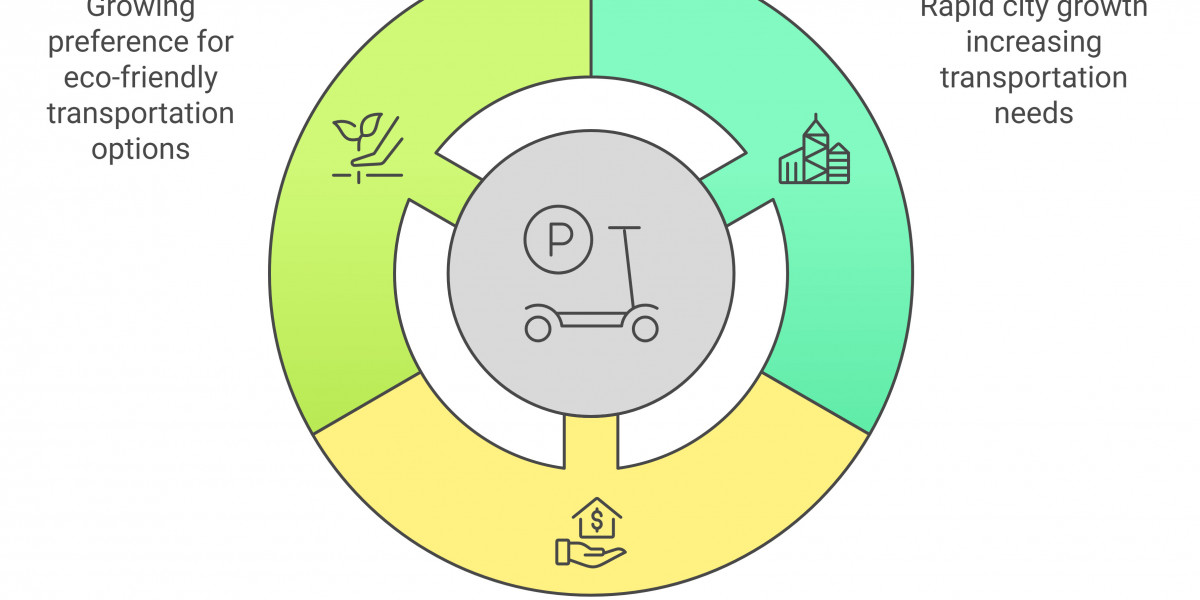India’s electric rickshaw market is rapidly reshaping urban mobility by offering a cleaner, more affordable alternative to traditional auto-rickshaws and two-wheelers. Amid rising concerns about air pollution, high fuel costs, and the need for sustainable transportation solutions, electric rickshaws (e rickshaws) have emerged as a preferred mode of transport in urban and semi-urban areas, contributing to a cleaner environment and providing more accessible mobility options.
Key Growth Factors-Government Support and Cost Efficiency
E rickshaws offer substantial operational and maintenance savings. Compared to their fuel-powered counterparts, electric rickshaws have lower operating costs, as electricity is cheaper than petrol or diesel. Additionally, these vehicles require less maintenance, as they have fewer moving parts and simpler engines, making them even more appealing for drivers seeking to minimize costs.
The exponential growth of India E Rickshaw Market can be attributed to several key factors, with government initiatives playing a crucial role. The Indian government has implemented policies aimed at promoting electric vehicles (EVs), such as the Faster Adoption and Manufacturing of Hybrid and Electric Vehicles (FAME) scheme, which offers subsidies for both manufacturers and consumers. This has significantly reduced the upfront cost of purchasing electric rickshaws, making them an attractive option for potential buyers and drivers.
According to a recent report by Ken Research, the India Electric Rickshaw market is valued at USD 1.1 billion, driven by rapid urbanization, government subsidies, and the rising demand for affordable, sustainable transportation solutions. The market has been influenced by policies such as the FAME-II scheme and increasing environmental concerns.
Role in Employment and Mobility-Empowering Drivers
Electric rickshaws have created significant employment opportunities, especially in urban and semi-urban areas. Thousands of drivers have embraced e rickshaws as a reliable and profitable source of income. The low initial investment and the ability to operate without the burden of high fuel costs make e rickshaws a viable business opportunity for people with limited capital.
These vehicles are particularly beneficial for last-mile connectivity, an essential aspect of India’s urban mobility ecosystem. In congested cities where traffic jams are common, electric rickshaws can navigate narrow lanes and provide flexible, affordable transport for passengers. They are often used for short-distance commutes, improving accessibility in areas where other forms of transportation may be unavailable or inefficient.
Challenges-Infrastructure and Technology Hurdles
While the potential of electric rickshaws is vast, the market faces several challenges. One of the biggest obstacles is the lack of adequate charging infrastructure. Many cities and towns still lack widespread access to EV charging stations, which limits the operational range of e rickshaws and creates anxiety among drivers about running out of charge mid-trip.
Additionally, while battery technology has made significant strides, concerns over limited battery life and the high costs of battery replacement persist. The charging time for e rickshaws also remains a challenge in urban settings, where drivers rely on quick turnaround times to maximize their earnings. These technical and infrastructural hurdles are gradually being addressed by innovations in battery technology, such as the development of faster-charging and longer-lasting batteries, and increased investment in EV infrastructure.
Future Prospects-A Robust Ecosystem for Growth
The future of India’s electric rickshaw market looks promising, driven by the continued support of government initiatives and rapid technological advancements. The market is set to grow exponentially in the coming years as more manufacturers enter the space, offering diverse and improved e rickshaw models to meet the demands of consumers.
To ensure sustainable growth, stakeholders—including manufacturers, policymakers, and private investors—must work together to build a comprehensive ecosystem. This includes expanding charging infrastructure across urban and rural areas, offering affordable financing options for drivers, improving safety standards, and enhancing battery technology.
Major Players in the Indian Electric Rickshaw Market
Several key players have emerged in India’s electric rickshaw market, leading the charge in innovation and production. These companies are helping to shape the future of urban mobility by providing reliable, cost-effective e rickshaw solutions:
Mahindra Electric: A pioneer in the electric vehicle space, Mahindra Electric has made significant strides in the electric rickshaw market with its e2o and eRickshaw models. The company is known for its focus on sustainability and its comprehensive approach to electrification, including charging solutions and fleet management.
Atul Auto: Atul Auto, one of India’s leading three-wheeler manufacturers, has entered the electric rickshaw market with its Atul Elite and Atul Gem models. The company has a strong distribution network and offers a range of e rickshaw options to cater to different consumer needs.
Kalyani Motors: Known for its electric rickshaws under the “Kalyani eRickshaw” brand, Kalyani Motors focuses on developing high-performance electric vehicles suited for India’s diverse terrain and climate conditions.
Okinawa Autotech: Okinawa is a prominent name in the electric vehicle market, particularly in electric scooters. The company has also ventured into the e rickshaw market, focusing on creating eco-friendly, cost-effective options for short-distance urban travel.
Saarthi EV Tech: This startup has gained attention for its unique e rickshaw design, aimed at increasing passenger safety and enhancing driver comfort. Saarthi EV Tech focuses on providing a complete solution with battery swapping and fleet management systems.
Case Study-E Rickshaw Adoption in Delhi
A notable case study that highlights the success of electric rickshaws in India is the adoption of e rickshaws in Delhi. As the capital city grapples with severe air pollution, the Delhi government has actively supported the transition to electric vehicles by offering subsidies, tax exemptions, and setting up charging stations. This initiative has been instrumental in making electric rickshaws a viable alternative to traditional fuel-powered rickshaws in the city.
E rickshaws in Delhi have become a common sight on the roads, offering an affordable and eco-friendly transportation option for short trips. The city’s push for cleaner air has been coupled with investments in infrastructure to support electric mobility, including dedicated charging points and policies aimed at encouraging the adoption of EVs.
As a result, Delhi has seen a significant increase in the number of e rickshaws in circulation, helping to reduce carbon emissions and improve the quality of urban transport. The success of Delhi’s e rickshaw model serves as a blueprint for other cities in India and beyond, showcasing the potential of electric rickshaws to transform urban mobility.
Conclusion-Driving Towards a Sustainable Future
India’s electric rickshaw market holds immense promise as a key player in the country’s sustainable transportation landscape. Supported by government policies, cost-efficiency, and the growing focus on air pollution reduction, e rickshaws are poised to revolutionize urban mobility. However, overcoming challenges such as infrastructure gaps and technology improvements will be crucial for maintaining momentum.
With continued innovation, government backing, and collaboration among key stakeholders, electric rickshaws are set to play a pivotal role in reshaping urban mobility across India. The future of this market is bright, offering a cleaner, more affordable, and sustainable transportation option for millions of people.









